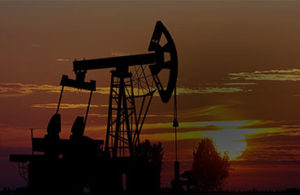High-Tech Geophysical Tools
- Home
- High-Tech Geophysical Tools

High-Tech Geophysical Tools
DescriptionCarrying out integrated well surveys as part of development control, complements of GIS in workover operations,
Implementing the interpretation of the results,
Providing reports in a standard form.
Radioactive logging (GR) methods.Gamma-ray logging, the simplest of the RC methods, involves recording natural gamma rays from rocks;
Gamma-gamma logging, which has two varieties distinguished by tasks to be performed: density logging and selective logging;
NLC – neutron gamma ray neutron logging with a stationary neutron source – is one of the main methods of investigating oil wells by neutron irradiation.
NNL – neutron-neutron logging with varieties: NNL-T (by thermal neutrons), NNL-NT (by supra-thermal neutrons), NKL-MNL (multi-probe neutron logging);
Pulsed neutron logging using a pulsed neutron generator with measurement of various products of the interaction of the source neutrons with the medium;
Gamma-neutron logging method based on the phenomenon of gamma ray photo-absorption with the emission of neutrons; this effect at a relatively low gamma ray energy (1.67 MeV) is only observed on beryllium atomic nuclei, so the method provides accuracy of beryllium content in ores up to 0.001%;
CARRYING OUT WORK ON CATTLEThe following tasks are carried out and solved when monitoring the technical condition of a well:
Determination of the quality of cementation and the condition of the cement stone over time;
establishing the location of the column’s coupling joints, perforation areas, thickness and inside diameter;
Identification of defects in casing and tubing (holes, cracks, dents);
Determination of inflow or absorption locations and intervals of downhole fluid circulation;
supervising the installation of the depth equipment;
estimating the thickness of paraffin deposits in the inter-pipe space.
The technical condition is investigated by radiometry, thermometry, acoustic cementometry.
Well monitoring techniques cover virtually the entire spectrum of physical fields.
cavernometry – measuring the average diameter of the well;
profilometry – measuring several diameters in a single cross-section of a well;
inclinometry – measuring well curvature angles;
Formation dipmeter measurements – determining the bedding elements of formations intersected by the well;
flowmetry – measuring the velocity of the fluid along the well;
grouting – a study of the quality of the grouting of the well;
defectometry – examining the condition of steel casing (SC) in wells;
Monitoring the developmentDetermination of inflow profile, sources and intervals of watering, flow rates and fluid composition in production wells.
Determination of the absorption profile and technical condition of the production casing of water injection wells.
Control of WNCs, HNCs, HWCs.
Determination of current reservoir saturation.
Monitoring of the technical condition of the operational columns.
Determination of reservoir hydrodynamic parameters.
THE COMPOSITION OF THE METHODS:
gamma logging();
magnetic coupling locator;
high sensitivity thermometry;
barometry;
mechanical flowmetry;
thermoconductive inflow indicator;
moisture meter;
inductive resistivity measurement;
noise measurement.
Tasks to be solved by geophysical methodsGeological Prospecting
The gas saturation of the reservoirs, the gas saturation capacity, the current gas saturation factor of the reservoirs and the current position of the GWC are assessed;
determination of flow rates, intervals and flow composition in production wells;
Determination of absorption intervals in wells intended for injection of industrial effluents;
Technological
determination of current thermobaric conditions in the wells;
determining the composition of the mixture that fills the well;
Determination of fluid levels in the well (in the tubing and inter-casing space);
Identification of water encroachment intervals and wellbore water intake intervals;
identifying buried gas accumulations;
Identification of flows along the wellbore and in the well space.
Technical
clarification of the well design, locations of subsurface equipment components and determination of the inner diameter;
Detecting leaks in EC and tubing;
determining the position of individual well construction elements;
Diagnostics of the technical condition of casing, tubing and other elements of the well structure;
perforation control;
assessment of the quality of the cementing of the columns;
Geo-environmental challenges
monitoring changes in the saturation of the reference horizons;
monitoring of the possible formation of technogenic deposits;
perforation control;
monitoring the tightness of UGS facilities
Carrying out integrated well surveys as part of development control, complements of GIS in workover operations,
Implementing the interpretation of the results,
Providing reports in a standard form.
Gamma-ray logging, the simplest of the RC methods, involves recording natural gamma rays from rocks;
Gamma-gamma logging, which has two varieties distinguished by tasks to be performed: density logging and selective logging;
NLC – neutron gamma ray neutron logging with a stationary neutron source – is one of the main methods of investigating oil wells by neutron irradiation.
NNL – neutron-neutron logging with varieties: NNL-T (by thermal neutrons), NNL-NT (by supra-thermal neutrons), NKL-MNL (multi-probe neutron logging);
Pulsed neutron logging using a pulsed neutron generator with measurement of various products of the interaction of the source neutrons with the medium;
Gamma-neutron logging method based on the phenomenon of gamma ray photo-absorption with the emission of neutrons; this effect at a relatively low gamma ray energy (1.67 MeV) is only observed on beryllium atomic nuclei, so the method provides accuracy of beryllium content in ores up to 0.001%;
The following tasks are carried out and solved when monitoring the technical condition of a well:
Determination of the quality of cementation and the condition of the cement stone over time;
establishing the location of the column’s coupling joints, perforation areas, thickness and inside diameter;
Identification of defects in casing and tubing (holes, cracks, dents);
Determination of inflow or absorption locations and intervals of downhole fluid circulation;
supervising the installation of the depth equipment;
estimating the thickness of paraffin deposits in the inter-pipe space.
The technical condition is investigated by radiometry, thermometry, acoustic cementometry.
Well monitoring techniques cover virtually the entire spectrum of physical fields.
cavernometry – measuring the average diameter of the well;
profilometry – measuring several diameters in a single cross-section of a well;
inclinometry – measuring well curvature angles;
Formation dipmeter measurements – determining the bedding elements of formations intersected by the well;
flowmetry – measuring the velocity of the fluid along the well;
grouting – a study of the quality of the grouting of the well;
defectometry – examining the condition of steel casing (SC) in wells;
Determination of inflow profile, sources and intervals of watering, flow rates and fluid composition in production wells.
Determination of the absorption profile and technical condition of the production casing of water injection wells.
Control of WNCs, HNCs, HWCs.
Determination of current reservoir saturation.
Monitoring of the technical condition of the operational columns.
Determination of reservoir hydrodynamic parameters.
THE COMPOSITION OF THE METHODS:
gamma logging();
magnetic coupling locator;
high sensitivity thermometry;
barometry;
mechanical flowmetry;
thermoconductive inflow indicator;
moisture meter;
inductive resistivity measurement;
noise measurement.
Geological Prospecting
The gas saturation of the reservoirs, the gas saturation capacity, the current gas saturation factor of the reservoirs and the current position of the GWC are assessed;
determination of flow rates, intervals and flow composition in production wells;
Determination of absorption intervals in wells intended for injection of industrial effluents;
Technological
determination of current thermobaric conditions in the wells;
determining the composition of the mixture that fills the well;
Determination of fluid levels in the well (in the tubing and inter-casing space);
Identification of water encroachment intervals and wellbore water intake intervals;
identifying buried gas accumulations;
Identification of flows along the wellbore and in the well space.
Technical
clarification of the well design, locations of subsurface equipment components and determination of the inner diameter;
Detecting leaks in EC and tubing;
determining the position of individual well construction elements;
Diagnostics of the technical condition of casing, tubing and other elements of the well structure;
perforation control;
assessment of the quality of the cementing of the columns;
Geo-environmental challenges
monitoring changes in the saturation of the reference horizons;
monitoring of the possible formation of technogenic deposits;
perforation control;
monitoring the tightness of UGS facilities
